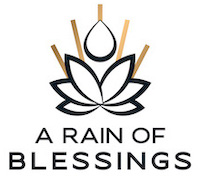Why do we practice?

“Why do I practice yoga?” For a long time, I let that question marinate. Of course, I could find a hundred reasons why I was practicing the limbs of yoga—but I was inquiring about the heart of practice. After years of daily practice, it dawned on me that purification of our “five bodies” is the purpose of the right-handed path of yoga.
According to yogic philosophy, we are in fact composed of five bodies. We have a physical body, which the yoga tradition calls the “food body.” We have an energy body that we viscerally experience as the spectrum from being in flow to feeling in the pits and everything in between. The third body is the mental-cum-emotional body referring to our inner life, the thoughts and feelings that preoccupy or possess us. The fourth is the body of discernment, whose realization manifests in the presence of wisdom. Finally, there’s the bliss body, which when attained heralds the state of freedom—the ultimate fruit of the path.
Asana, the yoga poses as practiced today, purifies the physical body. It’s essential to do asana practice daily, or as close to daily as possible. Asana “thaws out” the body, preventing its component parts from gumming up and setting into stiffened compositions due to repetitive and (most especially) bad habits. Asana makes the inner connective tissues supple, massages vital organs and skin, tones the muscles and ligaments, thickens the bones, stretches the nerves, pumps lymph and blood, lubricates the joints, and so on. These significant effects are but the tip of the iceberg in terms of asana benefits, given how intricately complex and beyond full comprehension the human body actually is.
It’s important here to recall that yoga calls the physical body “the food body.” Indeed, the quality and quantity of food we consume is even more critical for the body than asana is, which says a lot given how important asana is for the body. There is no possibility of purifying the body without clean food and water, without eschewing or minimizing alcohol and other intoxicants, and without curtailing our subjection to toxic chemicals and modern pharmaceuticals. That’s a tall order for our time. Still, we can go a long way by choosing organic, whole, humane, and (mostly) plant-based foods to the greatest extent possible. (That implies cooking and preparing food at home and rarely eating out.) Wholesome food and regular asana practice may be likened to the wings of “the bird” of our physical body. Only by strengthening both wings can we soar in life.
The more we soar, the more prepared we become for pranayama or breathing practices. The energy body is purified by means of breath work. Air nourishes the body at a whole other level than food and water. Learning to be aware of the breath continuously, and to breathe properly, more efficiently, and in challenging ways, strengthen and transform the entire nervous system among a myriad other effects. By purifying the energy body, pranayama practice makes us more present, vital, serene, and heedful—qualities that energetically feel good. Pranayama is the training ground for restraining and purifying the negative emotions that toxify our being. Negative emotions—lust, anger, jealousy, envy, greed, sloth, pride—drop us into “the basement.” Learning to tame them through breath work and awareness is a prerequisite for coming to abide in energetically elevated states, such as joy, devotion, commitment, compassion, perseverance, and love.
Pranayama practice carries us to the borders of the mind, setting the ground for purifying the fourth body, namely, the mental and emotional body. Beyond the means of pranayama (and clean eating and right movement), the interior landscape of our thoughts and emotions is cleansed by means of strengthening awareness, known as “the Witness” in yoga. The foregrounding and enlivenment of the Witness is imperative for a life of optimal flow in all arenas of experience. Without the Witness as our resolute ally, we are tumbled about haphazardly in whirlpools of thoughts and feelings that can be seriously hazardous “winds.” Containing those winds (especially the negative ones), and transmuting them, is the hallmark of a cultivated human. On the yoga path this containment and transmutation is reliant upon the Witness: the compassionate and loving observer of our entire being, in moment-to-moment real time. Through the Witness, we soon become transparent to ourselves (and gladly to others), which is the only way to purify what Krishna Das calls “the dark corners of the mind.” When we purify those dark corners by lucidly seeing them, we prepare the ground for advancing to higher and more refined levels of discriminating awareness.
The fourth body is that of discernment, whose potential is to mature into the attainment of wisdom with time. Discernment describes an elevated capacity of seeing that is facilitated by the purification of the first three bodies, and further cultivated through such practices as (self) study, ritual, reflection, concentration, prayer, and meditation. Discernment is honed by learning to stabilize the mind on what it is intent upon, and learning to be intent only upon higher and loving aims. In everyday life, discernment also manifests as the sword of critical thinking, which confidently directs the course of our lives independent of fads, cultural trends, peer pressure, and herd think. In Western thought (which is not as separate from Eastern thought as we might think), an ultimate attainment of discernment is to become a free thinker—achieving autonomy and authenticity in thought and (thus) action. A discerning/critical mind lifts us above the parapet of daily stresses and dramas, letting glimpses of the bliss body come into view.
Access to the fifth body, the bliss body, is occluded by what yogis call the causal body. “The causal body” is what causes us to be who we are and to act as we do. All of us remain intractably chained to our causal body, which was fashioned in our past and is ceaselessly projected onto our present. We may believe that we are acting freely and in accordance with genuine choices, but mostly we are driven by our causal body, composed by our conditioning and past experience (including forgotten, repressed, or lurking in the shadows traumatic experience). The past is ever-present in our life but tragically obscured from our awareness. Like a photographic negative that’s constantly being developed into the “color photo” of now, the past projects itself into the present without our being aware of the projection.
It is only by means of the ceaseless work of purification through practice that we come to see this rehearsal of “memory.” That seeing is the precondition to become free from the causal body. Becoming free from the causal body is just a way of saying that we are liberated from our past. When we become liberated from our past, an unprecedented state of freedom surfaces whose felt experience is bliss. A different way to describe this state of freedom-bliss is that we are born again. “To be born again” may sound like a fundamentalist fantasy, but in its authentic meaning it is about shedding our past, recreating ourselves on a clean canvas, and thereby attaining the ultimate fruit of yoga, which is freedom-bliss. Breaking from the past, from all deluded projections and scripts dictated compulsively by our causal body, is an irrevocable turning. Otherwise stated, all futures that our causal body was steering us toward are canceled forever.
Purifying the five bodies we are composed of is Work that imbues human life with profound meaning and purpose. In yoga practices, that purification is clothed in the splendorous attire of the yamas and niyamas—the inner and outer rules of virtuous conduct—which are the alpha and the omega of the path.

